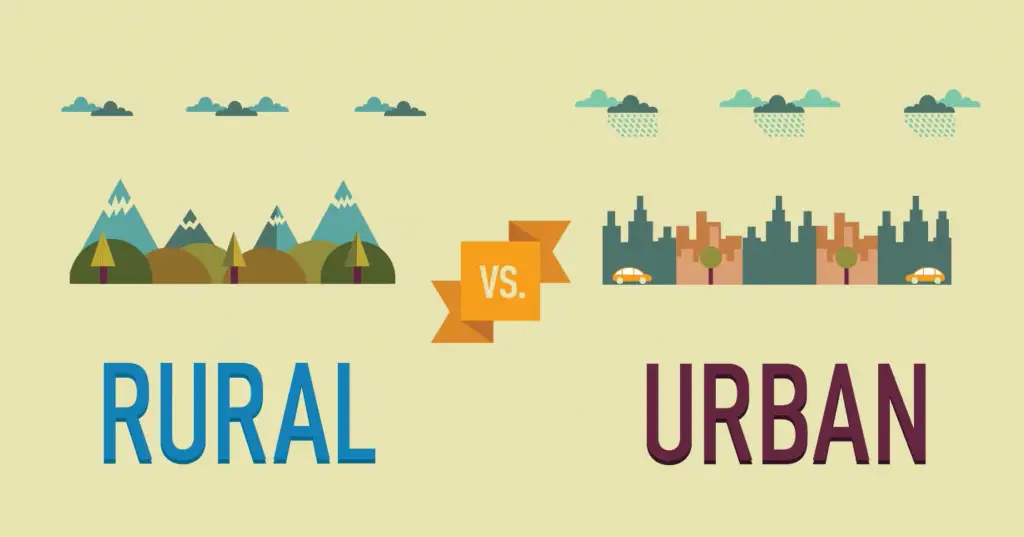19th August 2014
Guest Writer for Wake Up World
Those who struggle with drug abuse are often grouped into a single category – addicts. Not many people take the time to look at the differences between users or to learn about how treatment may vary based on demographics.
What’s one category that could make a difference in how drug abuse is treated? Location. Recent studies have found that urban and rural drug abuse rates are very different.
Where is Drug Use Most Prevalent?
Those who face addiction to prescription medication are different from those who struggle with heroin addictions. Because of this, a breakdown is necessary to understand such statistics on a deeper level. However, from the surface, addiction seems more prevalent in metro areas.
In large metro counties, there’s a 9.2% rate of illicit drug use among residents. In small metro counties, that percentage falls around 8.7%. In rural areas, however, that rate is 5.7%. Likewise, prescription abuse in urban counties is 12% and 5% in rural areas. Overall, rates are higher in urban, metro locations.
Drug Abuse in Cities
The information above is validated through data compiled by the Substance Abuse and Mental Health Services Administration and creatively displayed by 12 Keys Recovery in the video below.
By looking at specific metropolitan areas, the stark contrast in drug abuse compared to the national average becomes more apparent. Based on emergency visits per 100,000 residents in a given area in 2009, the video breaks down which areas face the highest levels of drug abuse.
Boston is the highest in the nation for illicit drug use with 571 visits per year, while the national average falls in at 317. Boston also ranks highest for heroin use with 251 emergency visits per year per 100,000 residents while the national rate is much lower at 69.
New York City ranks highest for illicit drugs combined with alcohol at 223 while the national rate is 69. These numbers indicate higher drug abuse rates in large metropolitan areas than rural locales.
Treatment Statistics in Rural Areas
What many professionals find interesting is the way treatment statistics vary from urban to rural areas, given the information presented above.
In rural areas, individuals seek treatment at higher rates than their urban counterparts for specific addictions. For rural residents, 50% of those with alcohol addictions seek treatment whereas only 36% of those in urban areas do the same. Marijuana treatment rates are more even at 21% for rural areas and 17% for urban areas. For non-heroin opiates, 11% of rural users seek treatment compared with 4% of urban users.
Urban areas do rank higher for treatment rates in certain areas. 22% of urban heroin addicts seek treatment, but, only 3% of rural residents facing the same addiction do the same. For cocaine, the rate is 12% for urban users and 6% for rural users.
One thing that remains steady across the board is the gender statistics for those seeking treatment. In rural areas, 68% of those seeking treatment are male and 32% are female. Likewise, in urban areas, 70% of those in treatment are male and 30% are female.
The video goes into more detail regarding drug abuse and the way it varies between urban and rural areas. When it comes down to getting help, treatment should be an option for everyone.
If you, or someone you know, needs help, the time to act is now.
Trends in Urban vs. Rural Drug Abuse
Video created by 12 Keys Recovery
About the author:
 Kayla Matthews is a freelance graphic designer with a passion for healthy living. When she isn’t designing the occasional video or infographic, you can find her blogging on Lifehack, where she writes about health topics, productivity and communication.
Kayla Matthews is a freelance graphic designer with a passion for healthy living. When she isn’t designing the occasional video or infographic, you can find her blogging on Lifehack, where she writes about health topics, productivity and communication.

If you've ever found value in our articles, we'd greatly appreciate your support by purchasing Mindful Meditation Techniques for Kids - A Practical Guide for Adults to Empower Kids with the Gift of Inner Peace and Resilience for Life.
In the spirit of mindfulness, we encourage you to choose the paperback version. Delve into its pages away from screen glare and notifications, allowing yourself to fully immerse in the transformative practices within. The physical book enriches the learning process and serves as a tangible commitment to mindfulness, easily shared among family and friends.
Over the past few years, Wake Up World has faced significant online censorship, impacting our financial ability to stay online. Instead of soliciting donations, we're exploring win-win solutions with our readers to remain financially viable. Moving into book publishing, we hope to secure ongoing funds to continue our mission. With over 8,500 articles published in the past 13 years, we are committed to keeping our content free and accessible to everyone, without resorting to a paywall.
Please note: the views expressed in this article are the views of the author and do not necessarily reflect the views of Wake Up World and its contributors.







